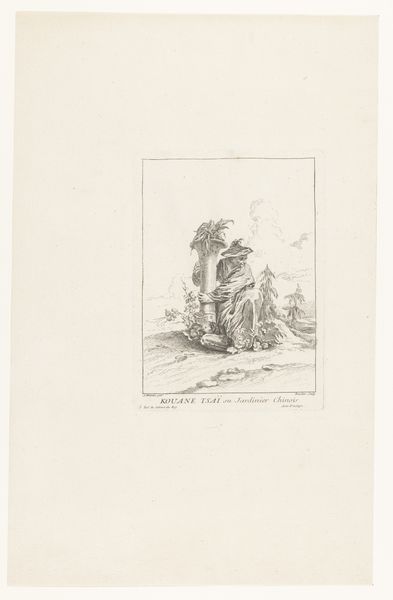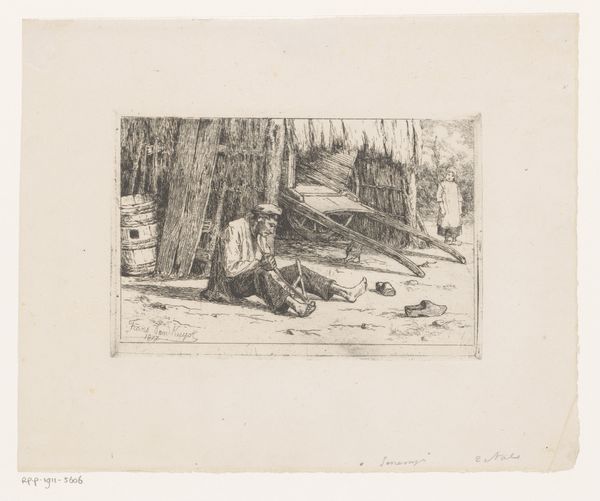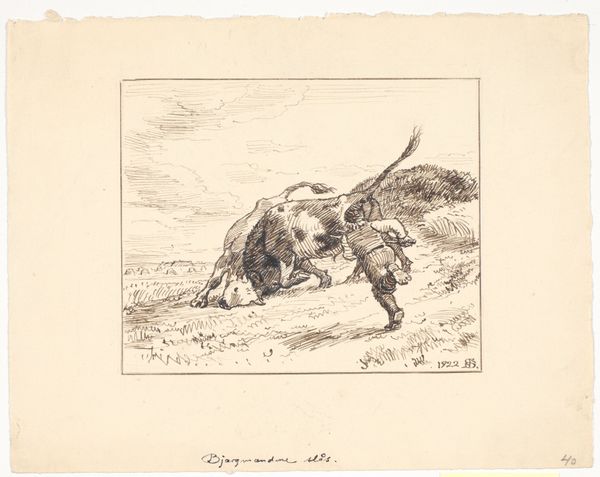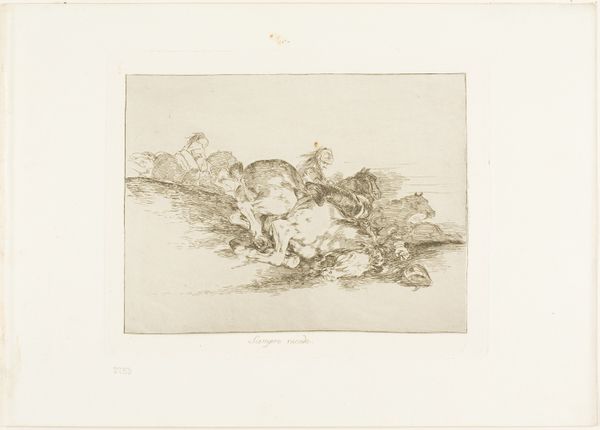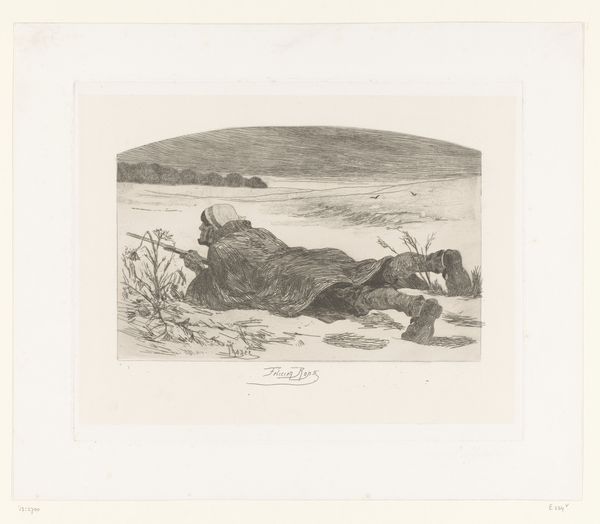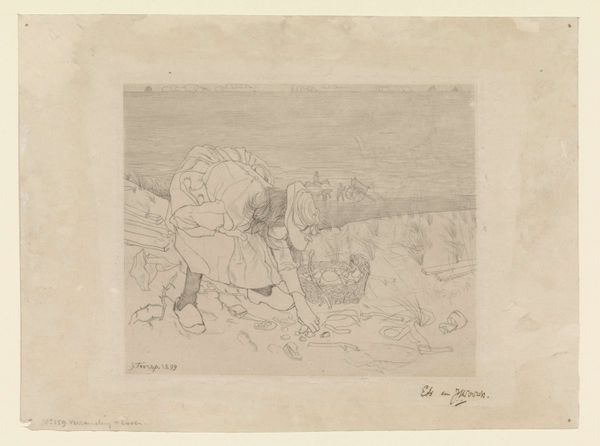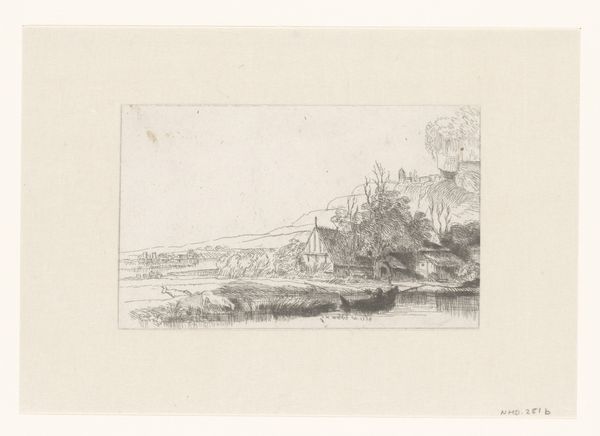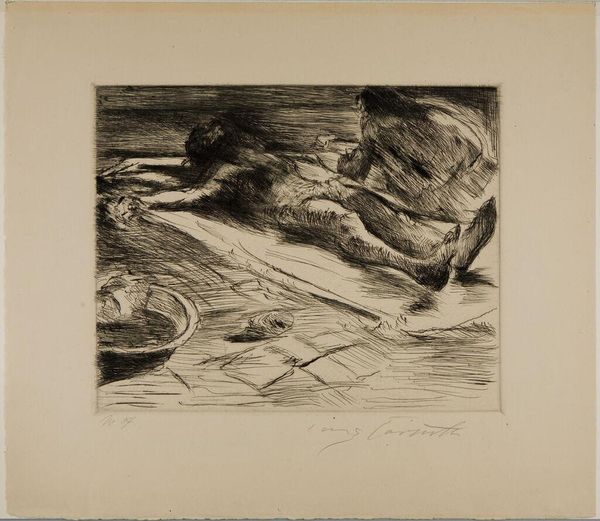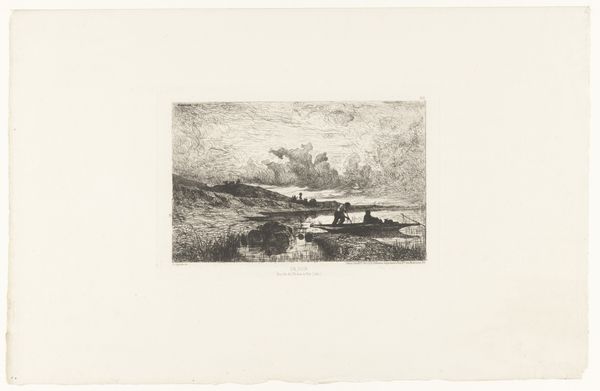
drawing, ink
#
drawing
#
landscape
#
ink
#
romanticism
#
sea
Dimensions: height 225 mm, width 299 mm
Copyright: Rijks Museum: Open Domain
Editor: Here we have Eugène Isabey's "Visserssloep op het strand," a drawing from 1830, created with ink. It depicts two old boats, one closer and overturned, with what looks like discarded gear. The other further off, adrift on the water. There’s something really melancholic about this image… What do you see in it? Curator: This drawing speaks volumes about the labor involved in 19th-century fishing. Observe the textures Isabey achieves with simple ink. The roughness of the wood, the yielding nature of the sand… it all points to a direct engagement with the materials that define this industry. What was it like to build these boats? Editor: Right, I was so focused on the boats as symbols of loss I overlooked how worn down they appear to be. Each plank seems almost deliberately placed. Curator: Exactly. Romanticism often idealized nature, but here we see labor and materiality. The image begs the question, "What kind of lives did the fishermen who used these boats live?". It acknowledges the physicality of their work. How does focusing on the material production change how you see the "melancholy"? Editor: I see what you mean. I was projecting my own feelings of sadness onto the scene, but looking at it as a product of human labor shifts the focus. It is like a monument to the backbreaking labor of these anonymous fisherman. Curator: Precisely. By examining the "means of production," we understand the human cost embedded within seemingly romantic landscapes. Editor: So instead of just seeing the drawing as a picturesque scene of boats by the sea, it's a story about the people whose lives depended on these materials. That's amazing. Thanks!
Comments
No comments
Be the first to comment and join the conversation on the ultimate creative platform.
